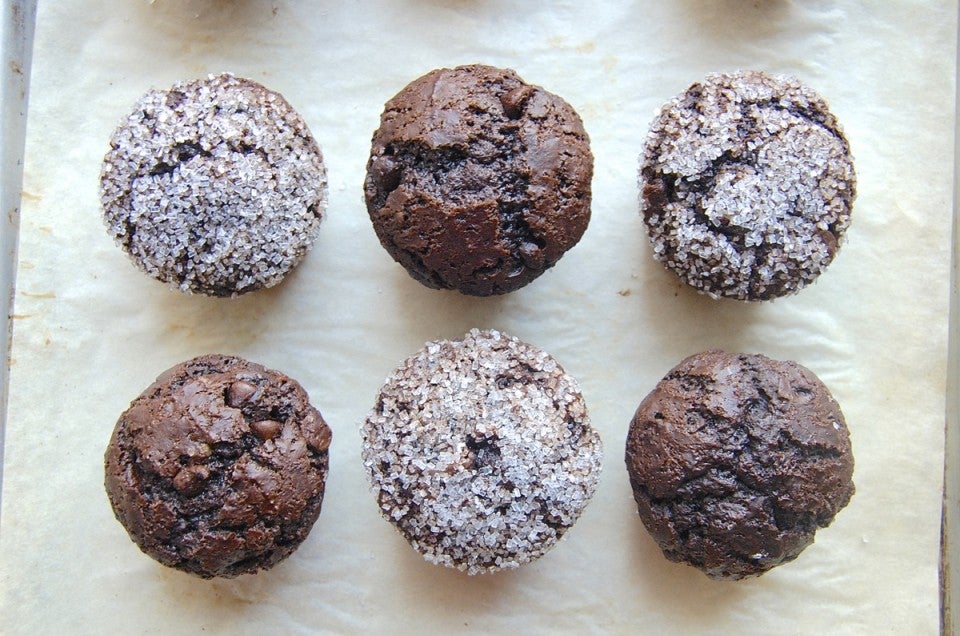


Many of us enjoy a sweet treat for breakfast. Example: a warm blueberry muffin, straight from the oven, its crackly sugar top the perfect complement to the moist berries and tender cake underneath. Heaven! But with sugar acquiring an increasingly bad nutritional rep, many of us want to know how to reduce sugar in muffins — and quick breads (think banana bread), as well.
Can you just cut the sugar in your muffin recipe in half? Or leave out a couple of tablespoons?
For best results, no. Neither solution takes into account the wide range of muffin recipes out there, ranging from barely sweet to over the top. Reducing sugar by 50 percent in a recipe that's already lower in sugar will leave you with a tasteless "treat;" and omitting just 2 tablespoons sugar from a recipe that starts with 3/4 cup isn't making a significant difference, calorie-wise.
What's the best way to reduce sugar in muffins? The answer is simple (arithmetic).
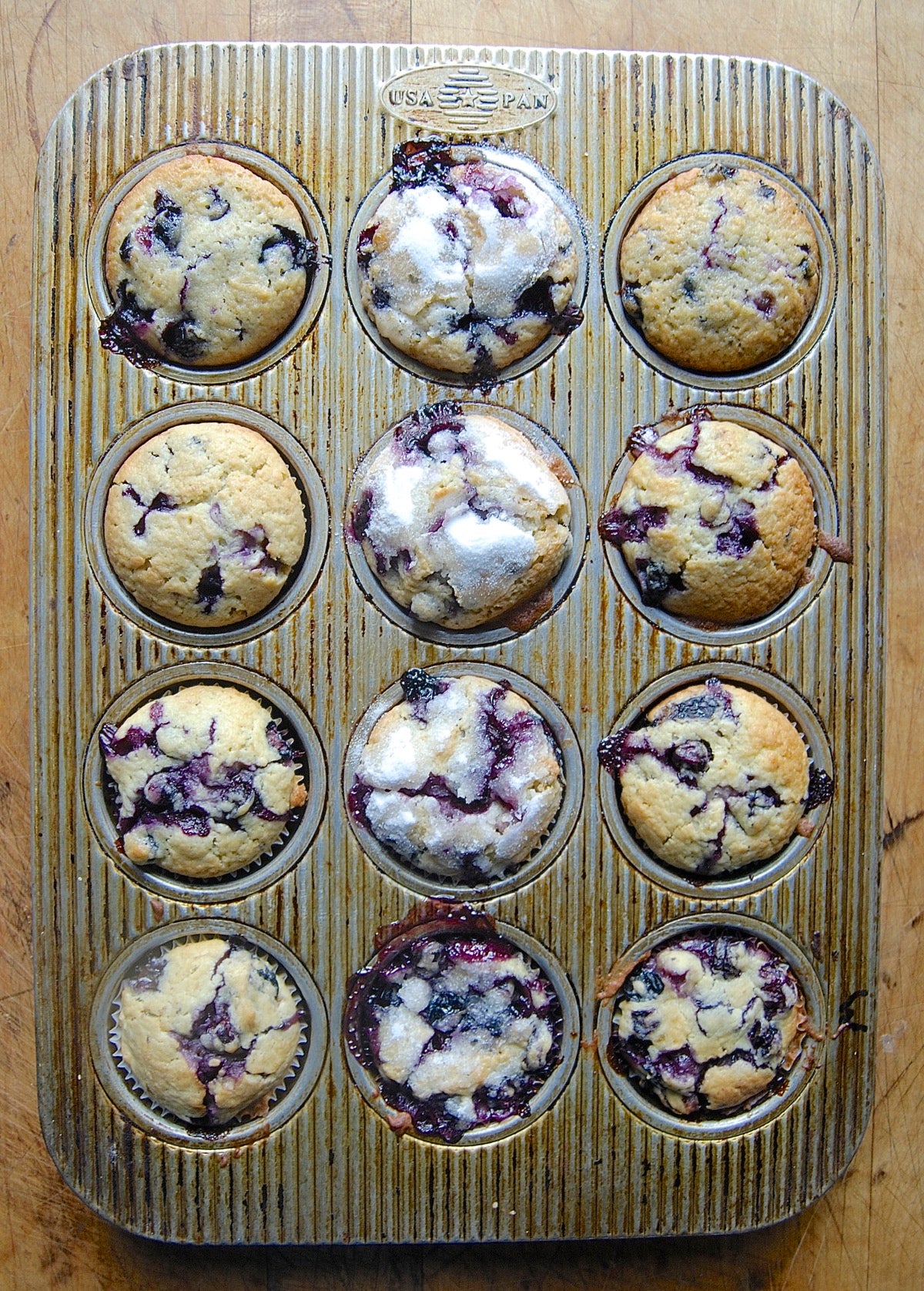
I recently tested a few muffin recipes using baker's percentage (baker's math), a simple way to both scale recipes up and down, and to adjust the balance of ingredients within a recipe.
Using this method, the weight of the flour is 100%; and other ingredient amounts are shown as a percentage of that, by weight. Don't like arithmetic? Bear with me; this is easy, I promise.
Here's an example: If you're making a batch of muffins using 2 cups (8 ounces) whole wheat flour, and you're adding 3 1/2 ounces (1/2 cup) brown sugar, then your sugar level is 44 percent (3 1/2 ÷ 8 = .44; i.e., 3 1/2 is 44 percent of 8).
I decide to take three muffin recipes, assess the initial sugar level of each as the control, then test each recipe four ways: with sugar levels of 25, 50, 75, and 100 percent.
Let's start with our King Arthur Flour Basic Muffins. Seems like a good choice, right?
I use ingredients' weight in grams, to make it easy to determine the muffins' current sugar level. I'm using unbleached all-purpose flour, so that would be 100g sugar ÷ 240g flour = 42 percent.
I make the muffin batter without sugar, then divide it into four bowls. To one bowl of batter I add enough sugar to equal 25 percent of the flour weight. To another I add 50 percent sugar; the third gets 75 percent, and the final bowl gets enough sugar to total 100 percent of the flour weight.
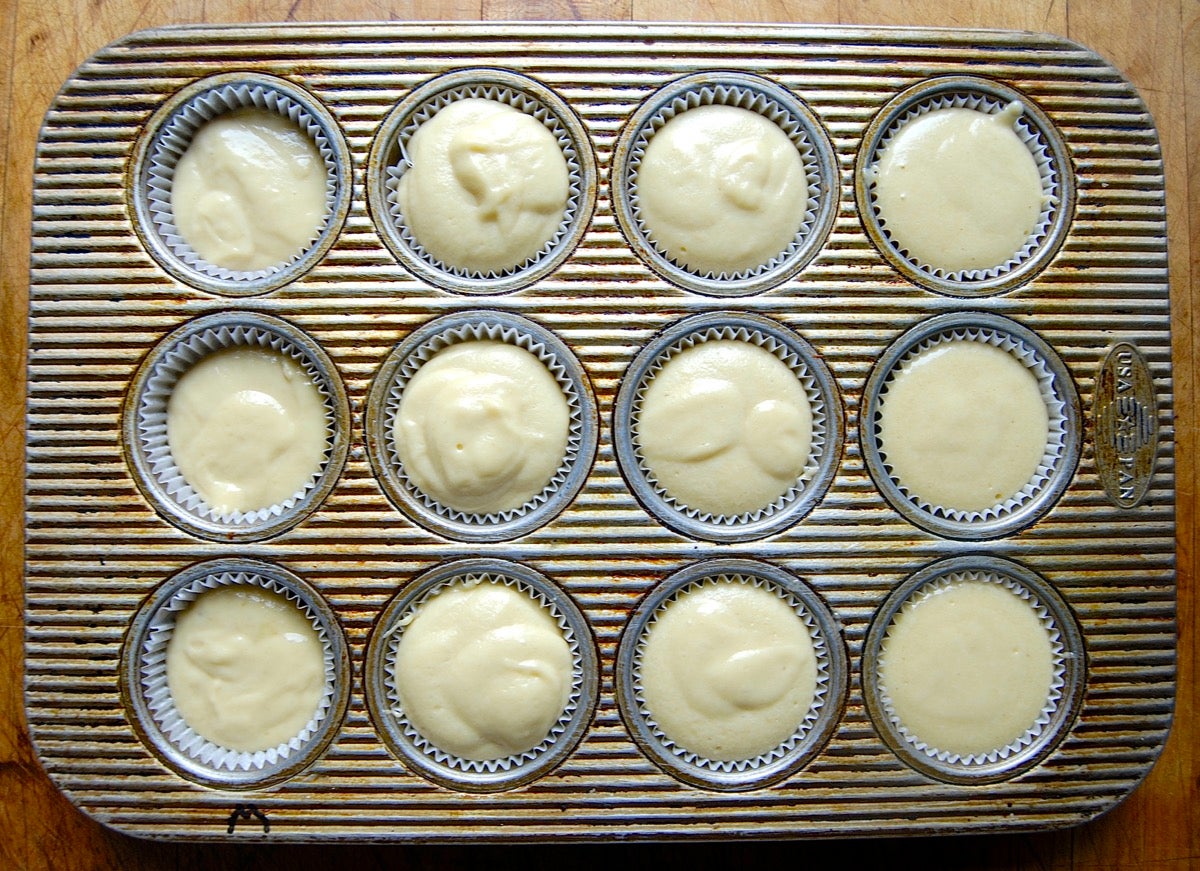
I scoop the four batches of batter into a muffin pan. The lowest-sugar muffins (25 percent sugar) are the vertical three on the far left; the 50 percent sugar version is next to them, etc.
I notice the lowest-sugar muffins don't fill the cups as fully. What other differences will there be?
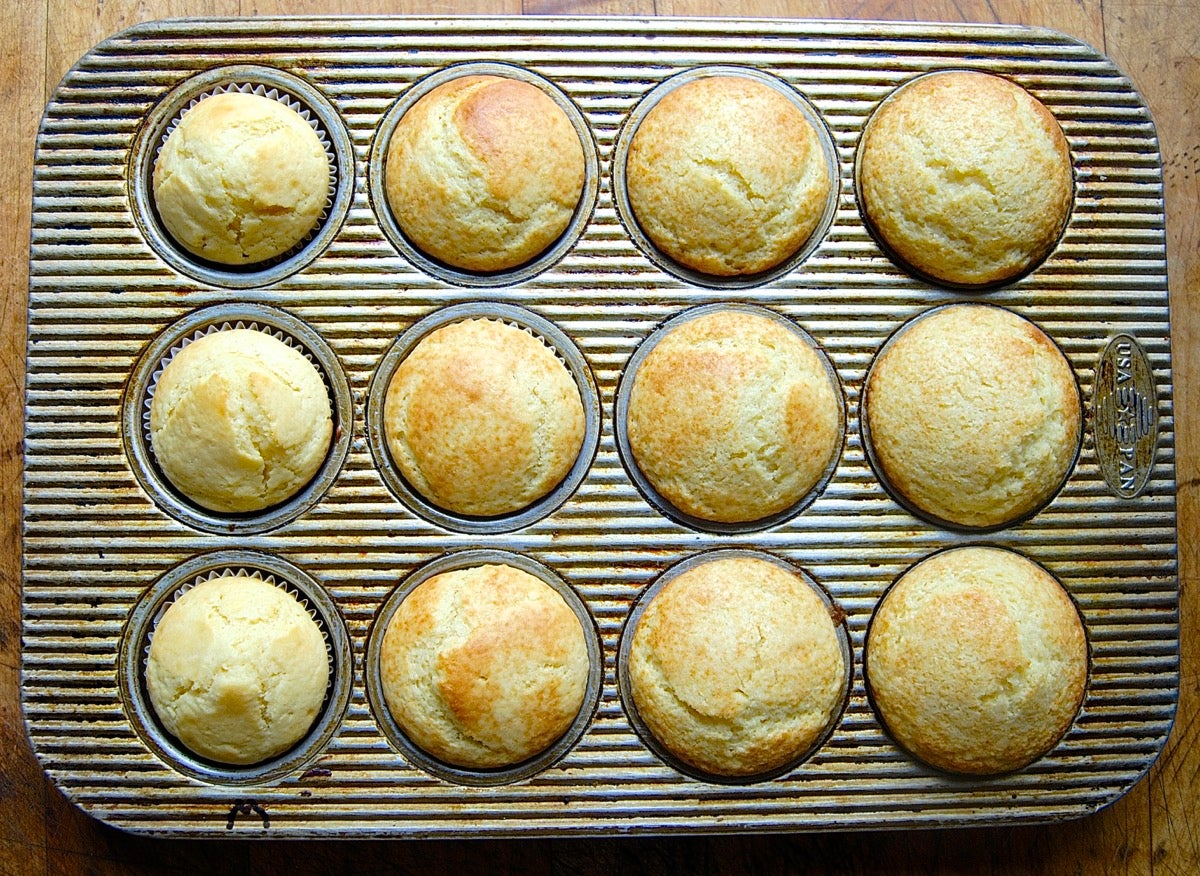
Once baked, the lowest-sugar muffins aren't as brown. Which makes sense: sugar promotes browning. All of the other muffins brown nicely.
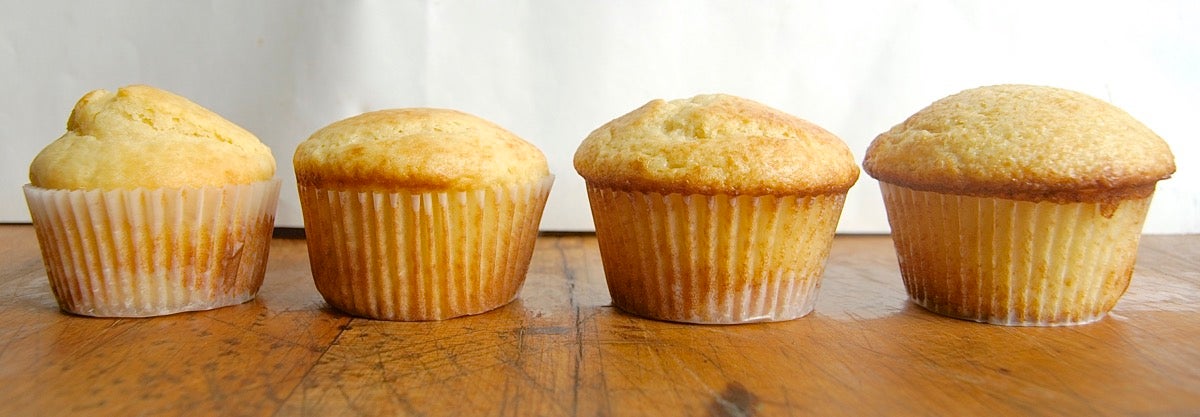
The lowest-sugar muffins rise unevenly. The rest rise evenly, with each increase in sugar producing an increase in overall volume of the muffin.
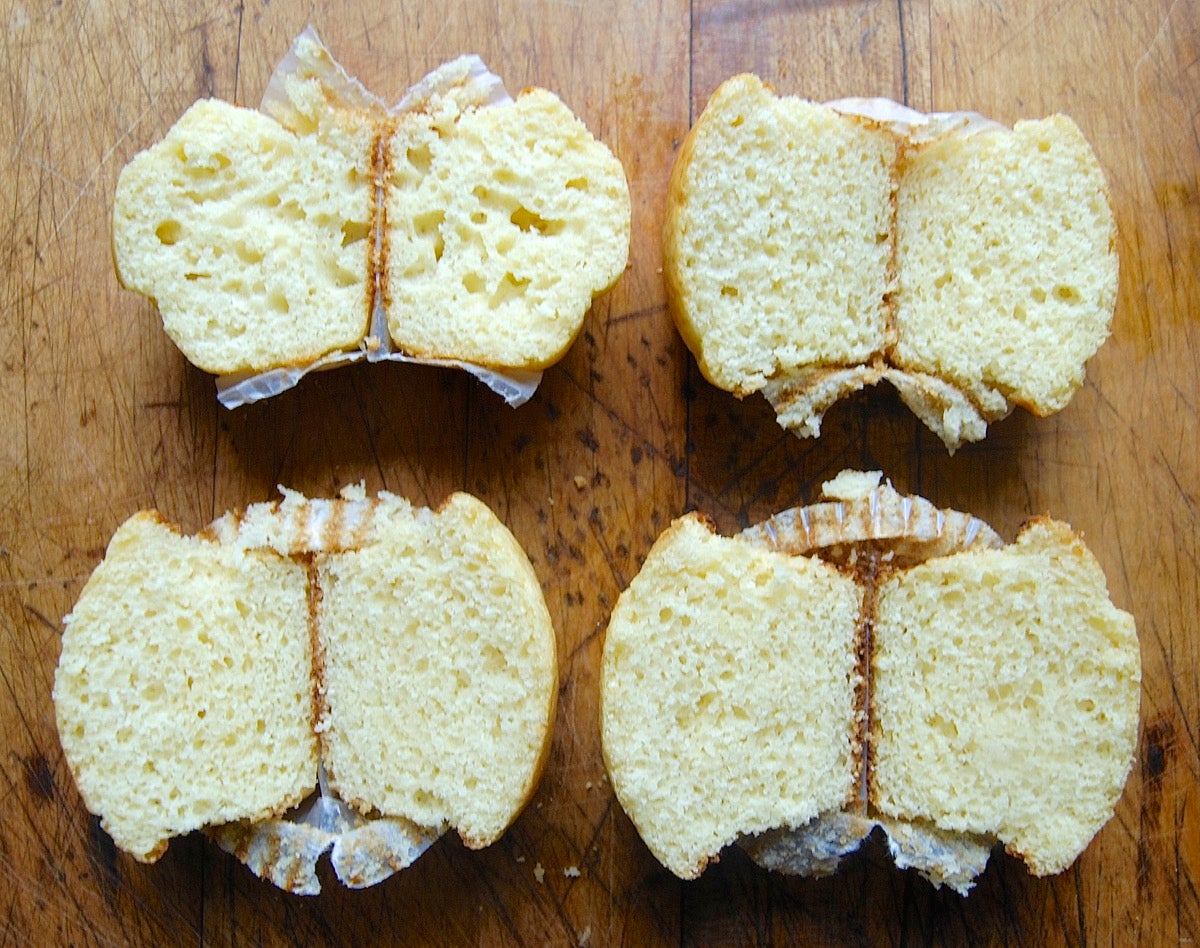
Texture-wise, the lowest-sugar muffins (upper left) show some tunneling. They feel a bit rubbery to the bite, and they're definitely drier.
The remaining three muffins — 50, 75, and 100 percent — are remarkably similar, texture-wise: they're moist and tender, with a medium grain.
And what about flavor? The lowest-sugar muffins taste similar to Northern-style cornbread: a touch of sweetness, but nothing you'd call a "sweet treat."
The 50-percent sugar muffins are mildly sweet, and offer a hint of butter and vanilla, with some nuttiness from the flour. At higher percentages of sugar, sweetness tends to overwhelm these other more subtle flavors.
Now remember, the original recipe calls for 42 percent sugar, which seems pretty low. Why is that?
Because the recipe was developed to include add-ins: chocolate or cinnamon chips, dried fruit or fresh berries, a sprinkle of sugar on top ... all of which add to the muffins' overall sweetness.
What about muffins with a higher degree of sweetness — and added fruit to boot? Our Famous Department Store Blueberry Muffins are jam-packed with sweet berries, and their sugar level ranges from 82 percent in the batter ...
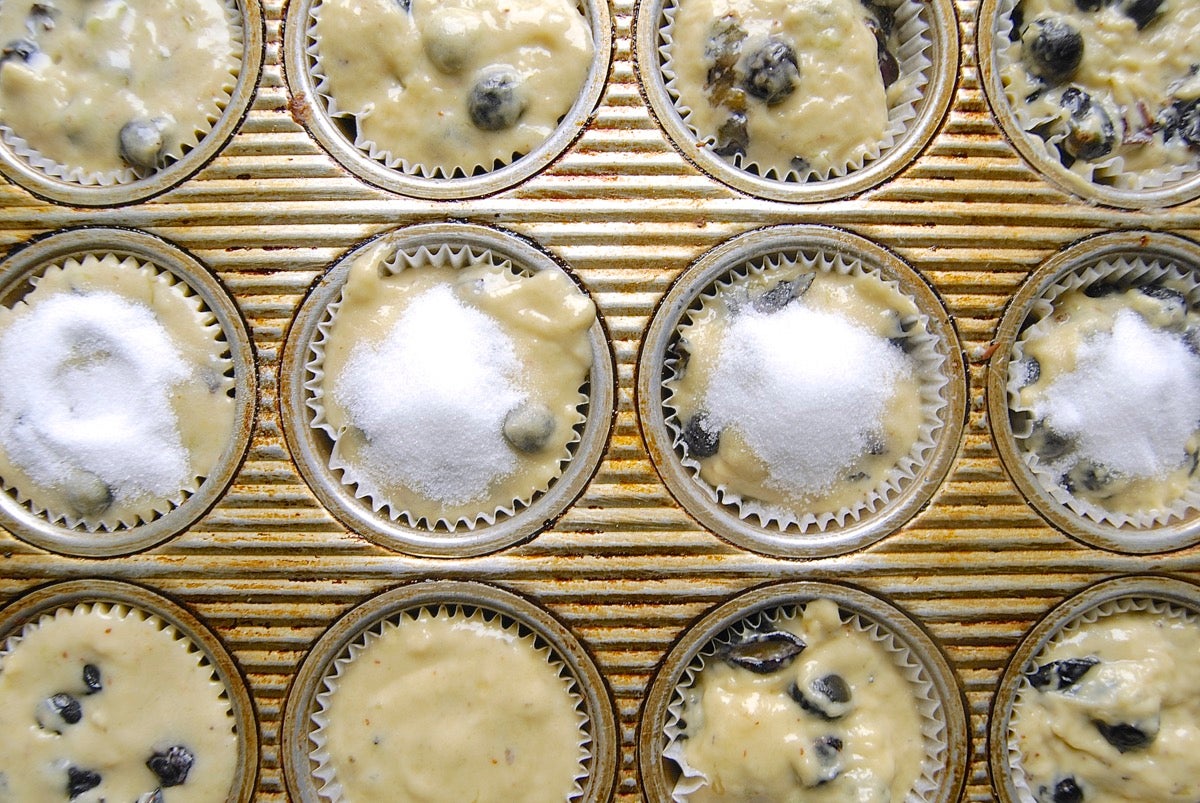
... to a whopping 103 percent if you add the sugar topping.
Let's see what happens when we bake these muffins using four different sugar levels.
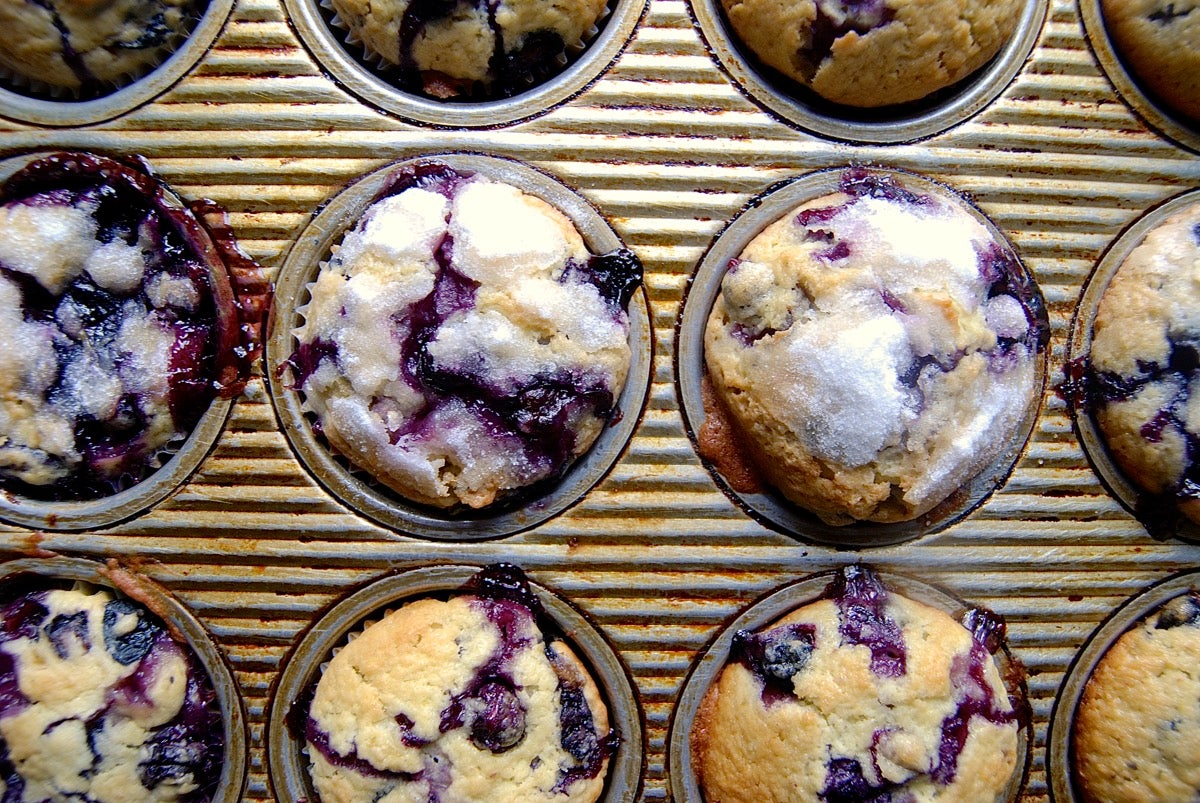
The 25-percent sugar muffins are, once again, slightly dry and rubbery. And again, I find myself choosing the 50-percent muffin (no sugar on top), which really accents the flavor of the blueberries. If I decide to go for a sweeter treat sometime, I'll add the sugar topping rather than add sugar to the muffin itself.
What happens when you introduce unsweetened cocoa powder into the equation? Since chocolate itself is bitter, will the 50-percent rule still apply — or will I need to use more sugar?
Our Chocolate Breakfast Muffins recipe calls for 1 1/4 cups brown sugar; my calculations tell me that reducing that amount by about two-thirds, to a scant half cup sugar, will bring me to the 50-percent mark.
Is this going to produce an acceptable muffin?
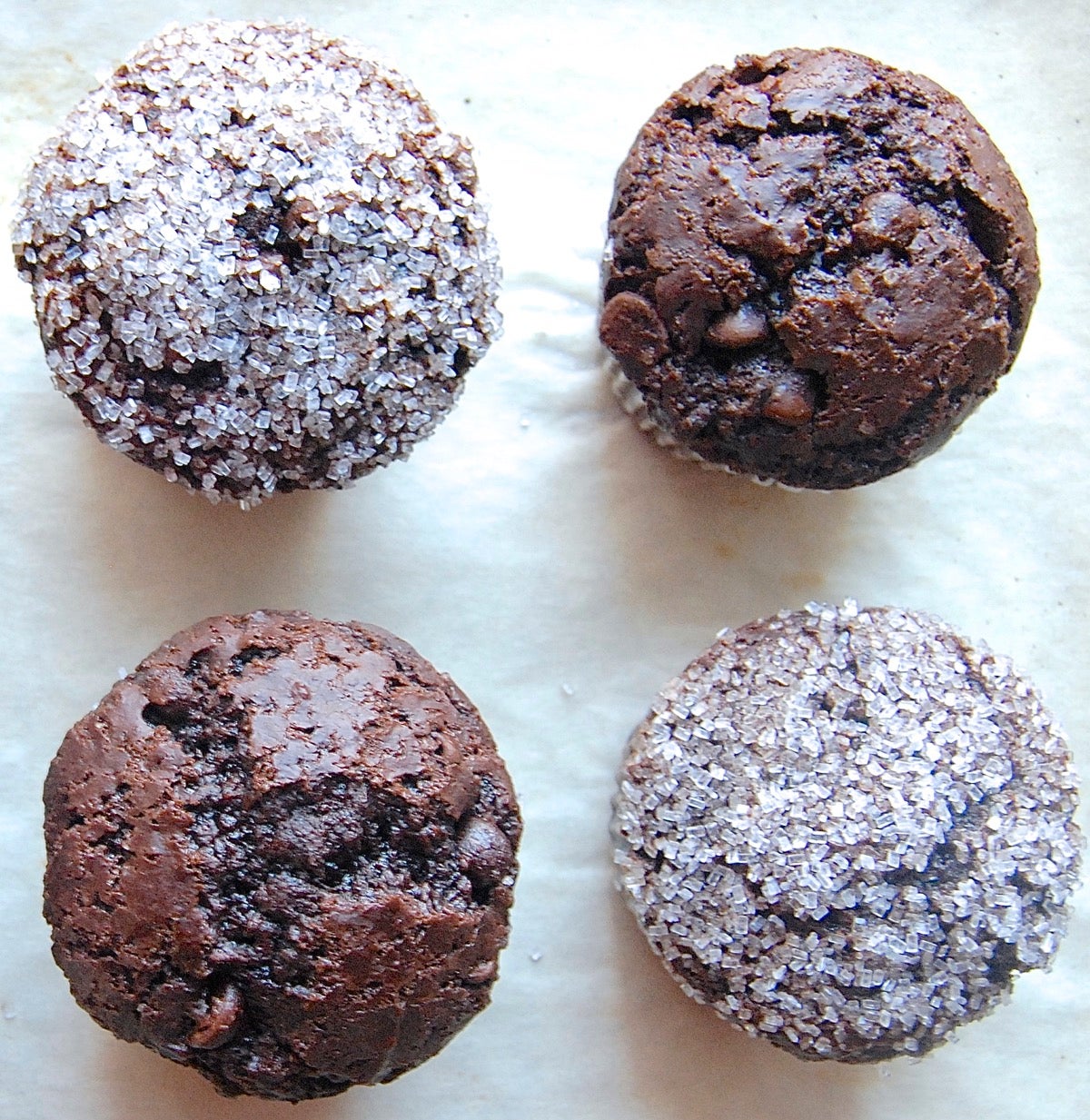
Yes — though the muffins are helped immeasurably by adding chocolate chips to the batter, which offsets the extra bitterness in the chocolate. Without those chips, I think the muffins will be a bit too austere, as far as sweetness goes. As for the sugar on top — not necessary if you use chips, but it does add pleasant crunch and, of course, additional sweetness.
Since muffins and quick breads are interchangeable, batter-wise, I decide to test my 50-percent solution with an old favorite: banana bread.
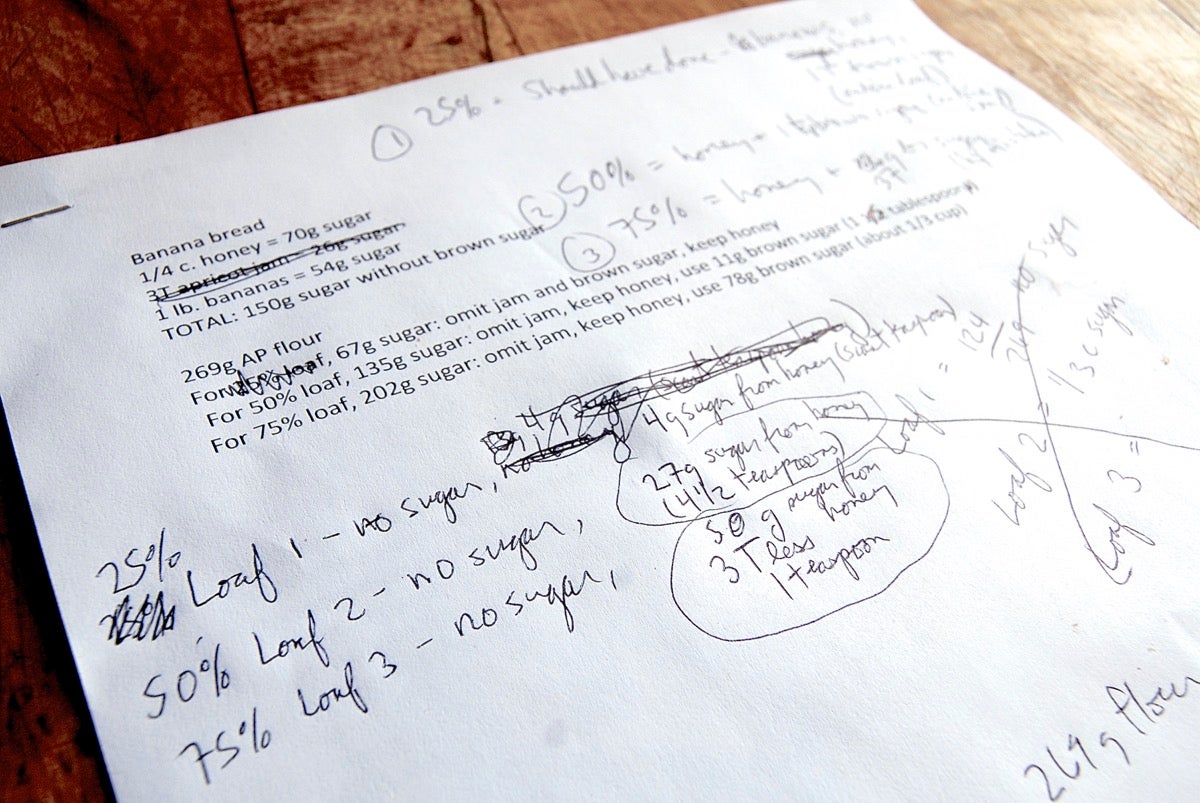
This proves a bit more challenging, since our Banana Bread recipe includes four sources of sugar: brown sugar, honey, apricot jam, and the bananas themselves. As you can see, this test takes a bit of figuring!
The original recipe checks in at 109 percent sugar, so I test loaves with 25 percent, 50 percent, and 75 percent sugar. I include the original amounts of bananas and honey in each recipe; leave out the jam, and adjust the brown sugar to reach the desired sugar level.
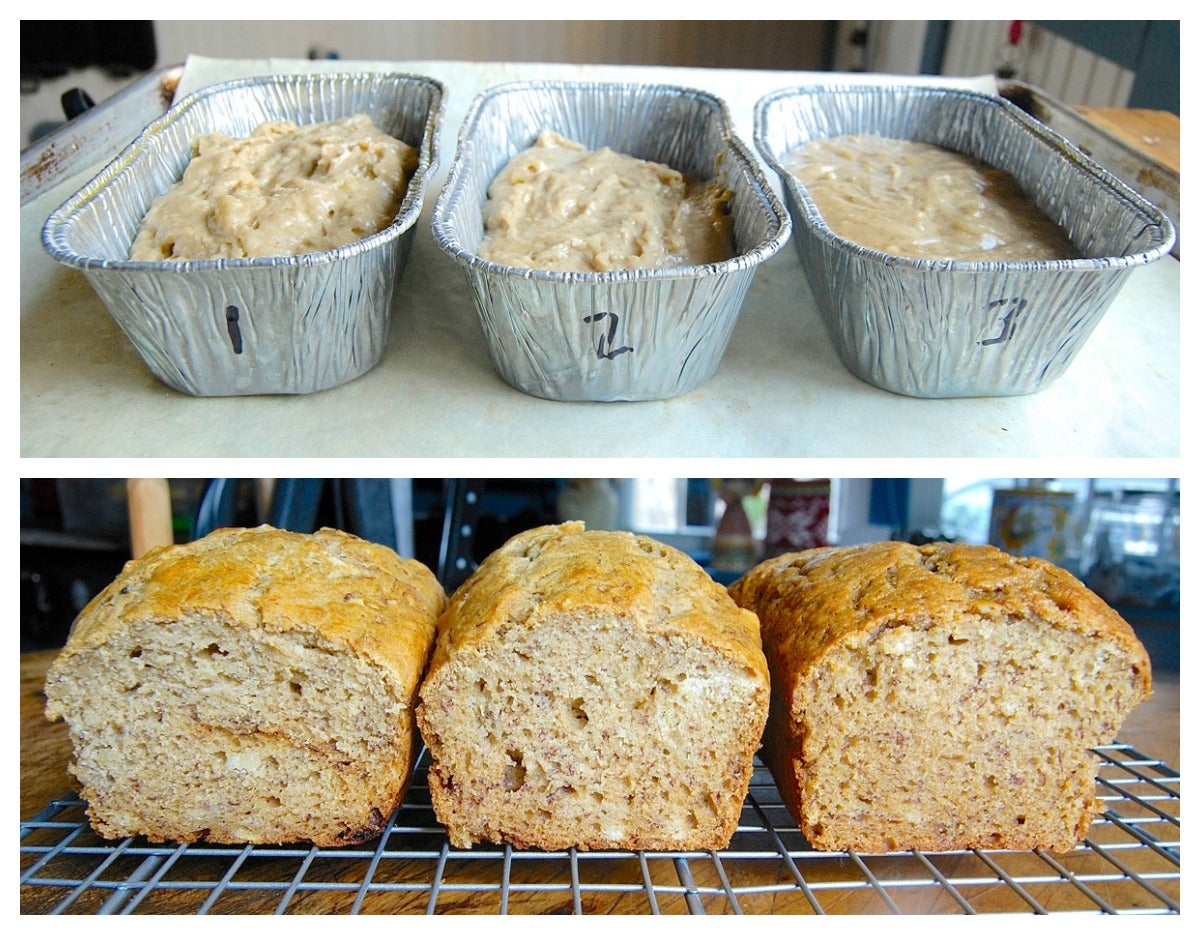
The loaves are similar in appearance but again, texture is where I see the biggest difference. Despite the moisture of both honey and bananas in each version, the lowest-sugar version is rather dry. Flavor-wise, I like both the 50 and 75 percent versions; neither is overwhelmingly sweet.
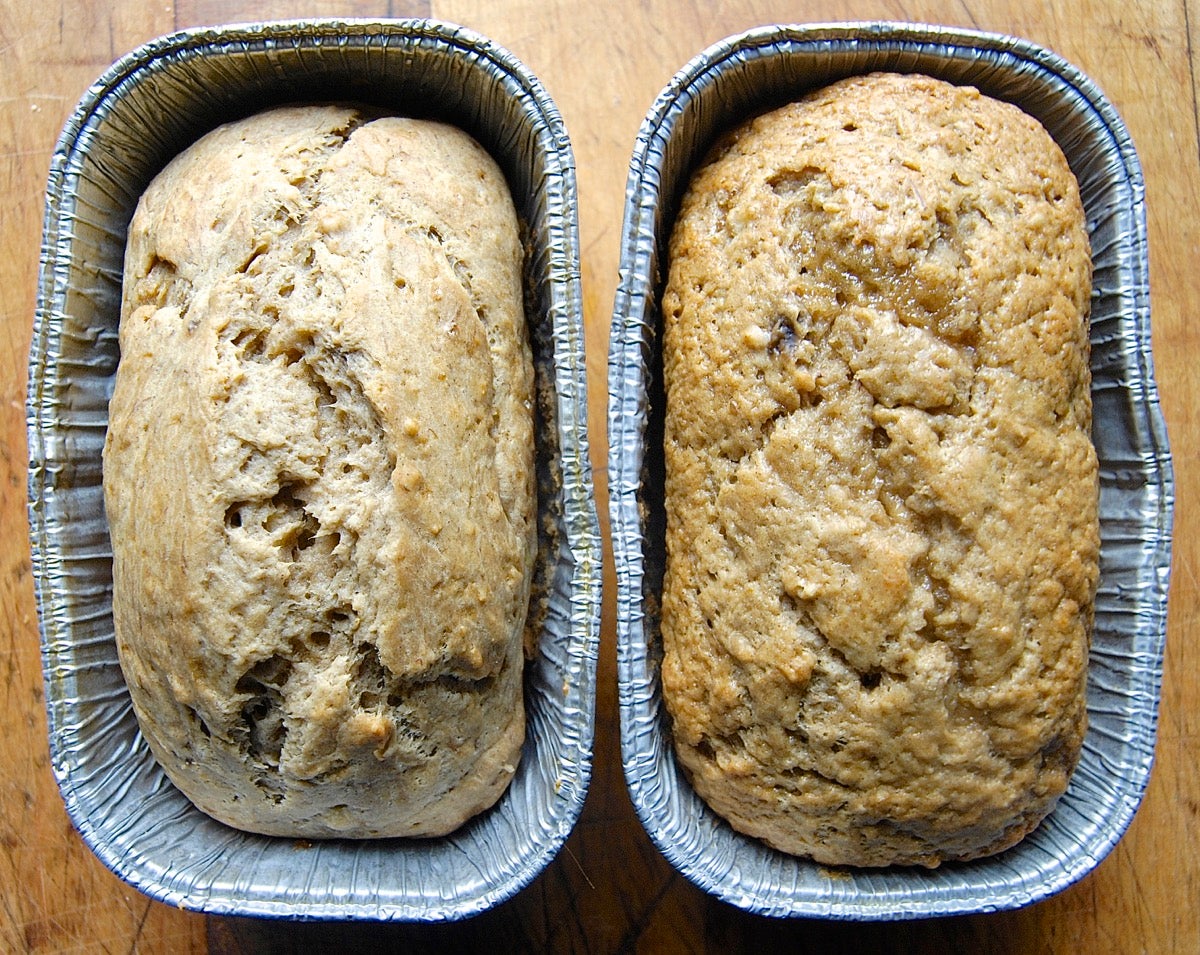
Just because, I do one more test using no sugar at all, relying solely on the bananas themselves for sweetness. At left is the no-sugar bread; at right, the full-sugar control (see the rivulet of melted sugar oozing from the top?)
No-added-sugar banana bread is, surprisingly, more than edible — if you're willing to warm the bread to increase its moisture, and to spread it with a spot of jam.
First, manage your expectations. If you want cake, eat a cupcake. Muffins should be less sweet than cake. And once you taste a muffin with less sugar than a cupcake, you'll realize what you've been missing: the flavor of other ingredients, like butter and cinnamon, fruit and nuts, previously hidden by sugar's dominant sweetness.
Next, decide what degree of sweetness you're after. Is barely sweet acceptable to you and your family? Would more sugar go over better? Are you able to strike a successful balance between your family's sugar intake and their desire for cupcake-like muffins?
Finally, be willing to get over any math anathema. Get out your calculator; this isn't rocket science. (I can say this because I know several honest-to-God rocket scientists.) Find your favorite muffin recipe. Determine the weight of the flour and the weight of the sugar. If the sugar's weight is more than half the flour's weight, reduce the sugar to just 50 percent of the weight of the flour. THERE. You've mastered baker's math — congratulations!
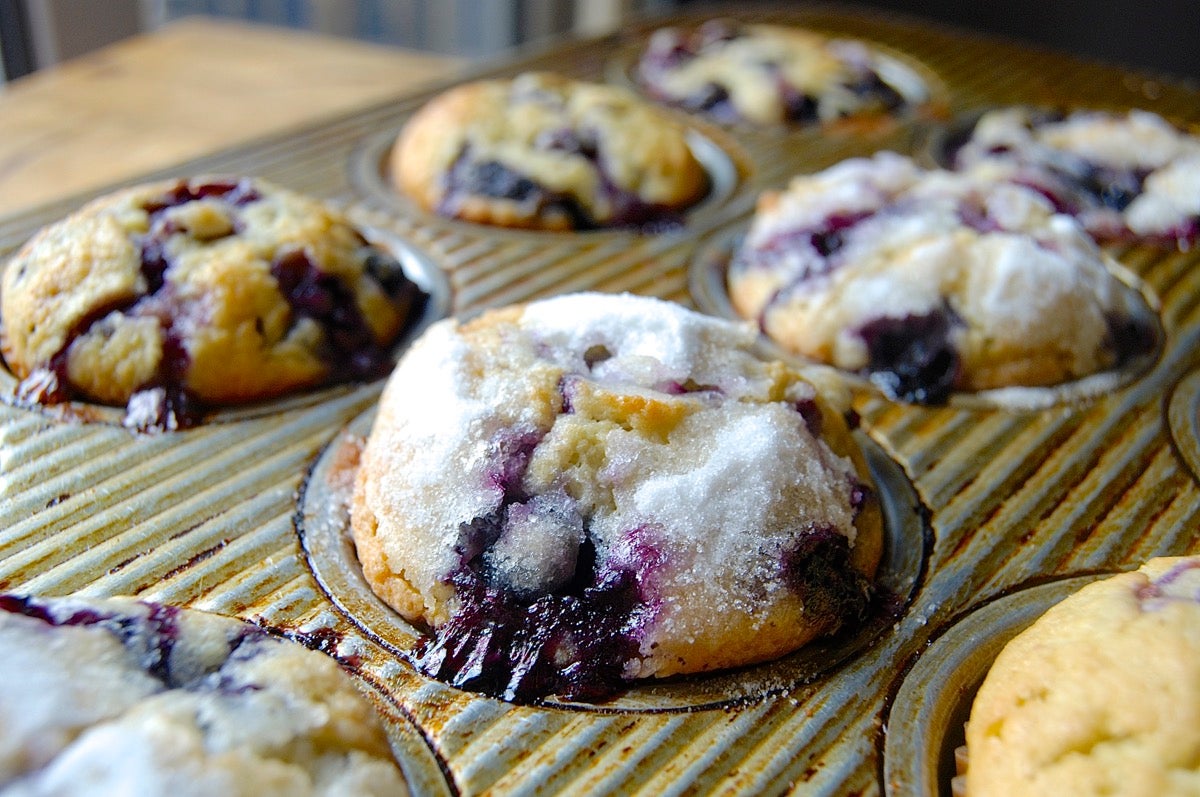
Practice this method for reducing sugar in muffins, and you'll soon be treating your family to muffins you can all enjoy — you for their lower sugar content, everyone else for their muffin-y goodness!
Want more information on reducing the sugar in your baking? Read these posts:
How to reduce sugar in cookies and bars
How to reduce sugar in cake
How to reduce sugar in yeast breads
How to reduce sugar in pie